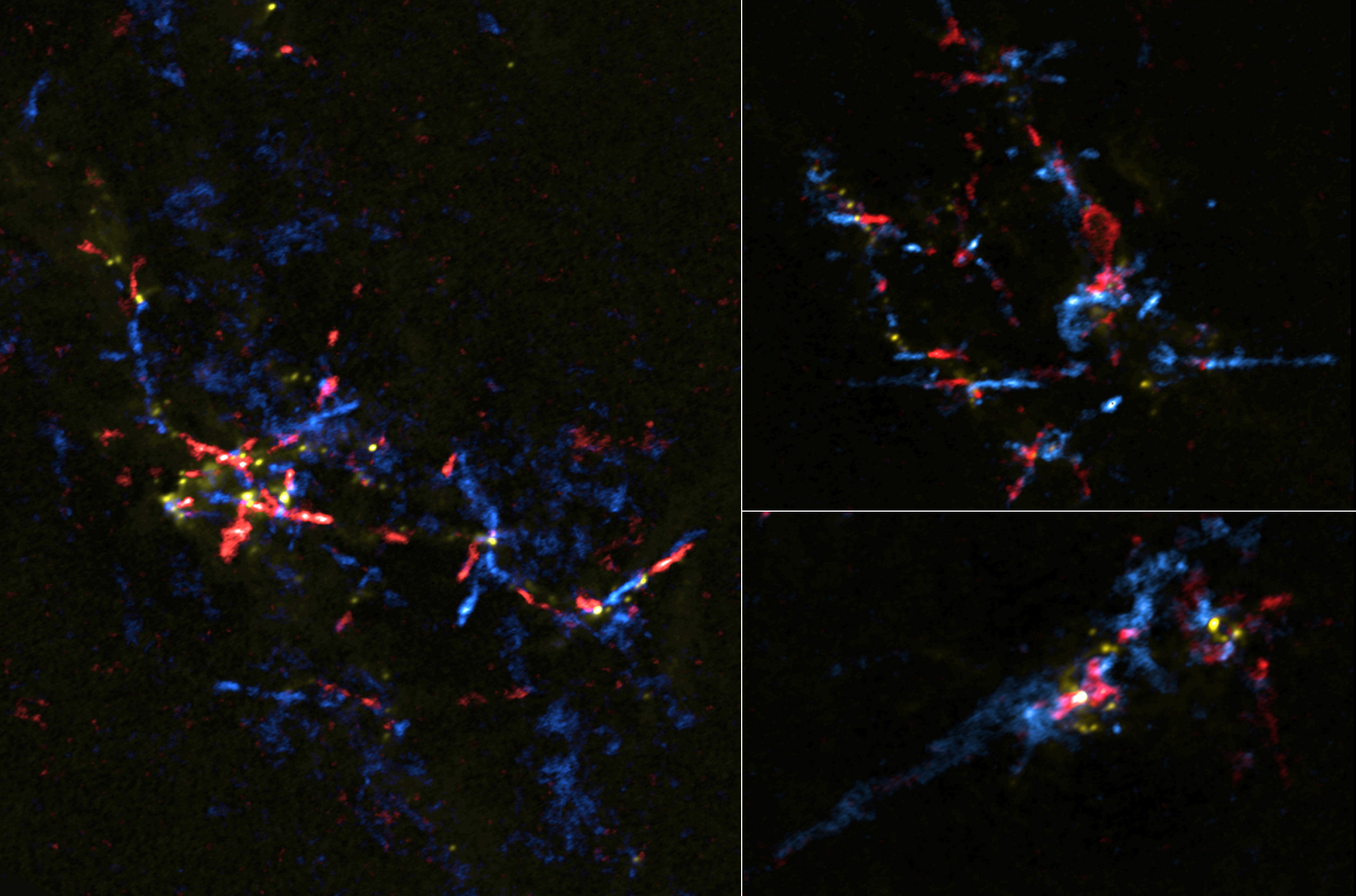Even the core of the Milky Way gives birth to stars
Since Star Trek V we know that the core of the Milky Way is a very special area. There is no galactic barrier there, but there is a gigantic black hole (Sagittarius A*) with the fields it produces and a lot of stars in a small space. With average distances of less than one light year the night sky of a planet must be very bright there.
New stars are formed from clusters of gas and dust clouds. The process is disturbed when magnetic fields waft through it or passing stars deform the cloud with their gravitational pull. In the core of the Milky Way, therefore, hardly any new stars should be born.
But this seems to be an error. Astronomers using the Atacama Large Millimeter/submillimeter Array (ALMA) have now found a number of «star eggs» (the dust clouds) with «baby stars» (protostars) around the center of the Milky Way. Apparently, star formation is more resilient than researchers previously thought after all.
To uncover the mystery of suppressed star formation, a team led by Xing Lu, an astronomer at the National Astronomical Observatory of Japan, used ALMA to observe regions near the Galactic center that contain abundant gas but no known star formation. Surprisingly, the team discovered more than 800 dense cores of gas and dust.
«This discovery raises the question of whether or not they are actually ‘stellar eggs,'» Lu explains. To answer this question, the team again used ALMA to search for high-energy gas streams that indicate stars formed in stellar eggs. Thanks to ALMA’s high sensitivity and high spatial resolution, they detected 43 small and faint outflows in the clouds. Lu comments, «Our observations prove that baby stars are still forming even in the highly disturbed regions around the Galactic center.» The research team is now analyzing the higher-resolution observational data from ALMA to better understand the processes that drive gas outflows and star formation near the Galactic center.
